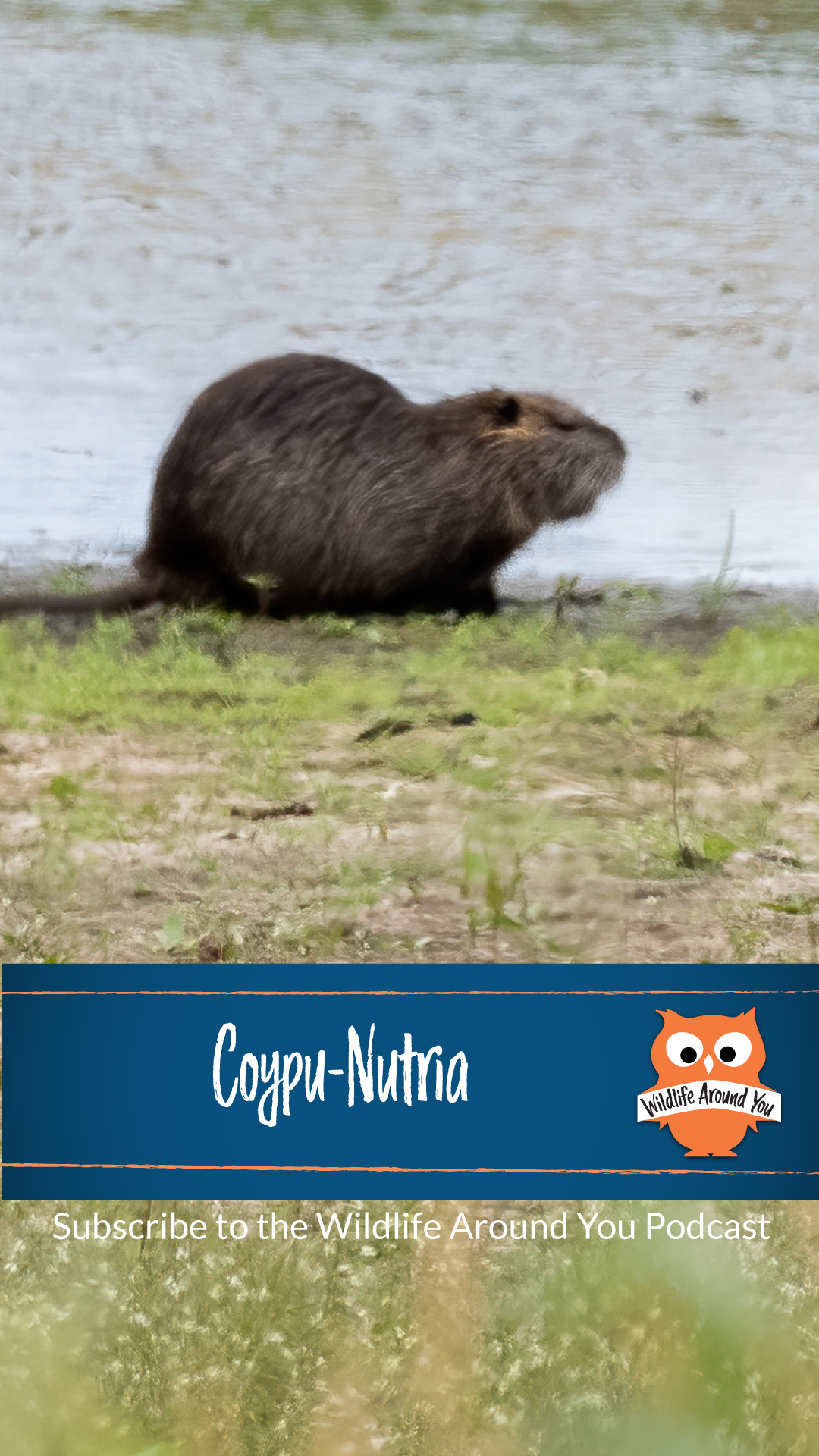Identification:
- Nutrias are large rodents with brown or gray fur, webbed hind feet, and long, orange incisor teeth. Sometimes called Coypu, or swamp beaver, or you could call them (ROUSes- Rodents of unusual size)
- They have short, round ears, and a pointed snout. Adults typically weigh between 12 and 22 pounds and can grow up to 2 feet in length, including their long, scaly tail.
- Look like a beaver with a rat tail. Sometimes is mistaken for a muskrat.
Habitat:
- Nutrias are semi-aquatic animals that are native to South America.
- They have been introduced to many other parts of the world, including North America, Europe, and Asia, where they often thrive in wetlands, swamps, and other aquatic habitats. They were introduced for fur production.
- They are particularly well adapted to living in marshy areas with plenty of vegetation, such as cattails, sedges, and water lilies.
Behavior:
- Nutrias are primarily nocturnal animals and are most active at night.
- They are social animals and often live in large groups, known as colonies, that can consist of up to 20 individuals.
- They are excellent swimmers and can hold their breath for up to five minutes underwater.
- They are also good climbers and can often be seen scaling steep riverbanks and other obstacles.
Home building:
- Nutrias build large, dome-shaped nests or burrows out of vegetation, mud, and other materials.
- These nests can be up to six feet in diameter and are usually located near water, often in the roots of trees or in burrows dug into riverbanks.
Offspring:
- Nutrias breed throughout the year and usually have two litters of offspring per year.
- The gestation period lasts around 130 days, after which the female gives birth to a litter of between one and 13 young. The average litter is 4.
- Females usually only produce 6 litters in her life.
- The young are born fully furred and with their eyes open and can swim within hours of birth.
- They will continue with their mother and nurse for 7-8 weeks. After that they are on their own.
- Most nutrias die before they are 3 years old.
Diet:
- Nutrias are herbivores and primarily feed on a variety of aquatic plants, such as cattails, water hyacinths, and duckweed.
- They are also known to eat a variety of other plants, including grasses, roots, and stems.
- They will eat up to 25% of their body weight daily so around 4-5 lbs of vegetation.
Predators:
- Nutrias have few natural predators in their native range, but in areas where they have been introduced, they may be preyed upon by a variety of animals, including alligators, coyotes, foxes, and birds of prey.
Fun facts:
- They are considered a pest or invasive species due to their destructive impact on wetland ecosystems.
- Nutrias have very strong teeth that can gnaw through tough materials, such as wood and metal. This has led to some unusual incidents, such as nutrias causing damage to cars parked near waterways.
- In some areas, nutrias are considered a delicacy and are hunted for their meat, which is said to be similar to rabbit or chicken.

